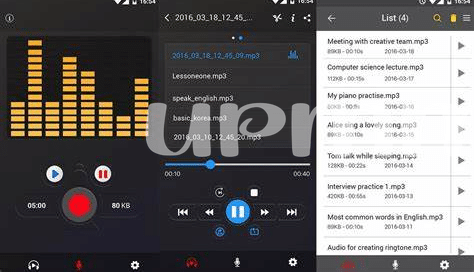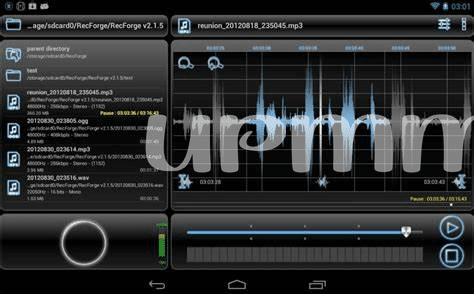- Tuning into Your Environment: Room Acoustics 🎤
- The Heart of Sound: Choosing Microphones 🎙
- Crafting the Signal Path: Audio Interfaces 🌐
- Manipulating the Mix: Equalization Techniques 🎚
- Dynamic Control: Compression and Limiting 📈
- Capturing the Vibe: Mic Placement Strategies 📍
Table of Contents
ToggleTuning into Your Environment: Room Acoustics 🎤
Imagine stepping into a space that feels just right—where each note wraps around you like a warm hug. That’s the magic of good room acoustics. The space where you record sound can be as important as the music itself. Walls, ceilings, and even floors can change the way your music sounds. Think of your recording area like a musical instrument. You want it to sound its best, right? 🎤
To nail this, you’ve got to listen to your room. Clap your hands, snap your fingers, let your ears guide you. If your clap echoes, your recordings might too. Soft things like curtains or carpets can help soak up unwanted echo, making your music sound cleaner and clearer. It’s about finding the sweet spot where your music can sing without the room talking back. 🎶🔍
Here’s a handy table to help you understand how different materials in your room can affect your sound:
| Material | Effect on Sound | Use for |
|---|---|---|
| Carpeting | Soaks up high frequencies | Reducing echo and brightness |
| Curtains | Reduces reflections | Absorbing mid-to-high frequencies |
| Foam Panels | Balances reverberations | Controlling room resonance |
| Bookshelves | Diffuses sound waves | Creating a natural, scattered sound |
| Bare Walls | Reflects sound | Can cause unwanted reverb and echo |
Tweaking the space in which you record is all about making sure your sound doesn’t bounce around too much or too little. Get it just right, and you’ll have a recording that sounds as good to others as it does in your head. Flip that music into your personal sound sanctuary! 🎵✨
The Heart of Sound: Choosing Microphones 🎙
When diving into the world of audio recording, it’s like stepping into a kitchen where the microphones are your ingredients. Each one has its unique flavor – some are rich and full-bodied, perfect for capturing the deep resonance of a bass guitar or the warm tones of a cello. Others are crisp and delicate, with the ability to catch the subtle nuances of a voice or the gentle taps on a cymbal. 🍽 Like a chef selects the best produce, you must pick the right microphone for the job. Condenser mics, with their sensitive diaphragms, are brilliant at snagging every detail in a vocal performance, while dynamic mics are the sturdy pots and pans – reliable and perfect for louder sources like drum kits.
With any artist, knowing the tools intimately creates the finest art, and so it is with mics; understanding their pickup patterns – be it omnidirectional, capturing sound from all around, or unidirectional, focused like a spotlight on a specific source, is key in sculpting your sound. 🎭
In this symphony of choices, an awareness of the technology at your fingertips – from the vintage warmth of ribbon microphones to the modern clarity of USB-equipped models – lets you mix and match for the perfect audio palette. While selecting your sound-capturing allies, remember that the space’s acoustics and the intended style of the recording are your guiding stars.
Now, considering you’re on a quest for top-notch audio, you may also be on the lookout for ways to boost your device’s prowess. For those with a rooted Android device, finding the proper enhancements can be game-changing. Wondering what is the best app for rooted android in 2024 updated? Click here to revolutionize your device with the latest offerings!
Crafting the Signal Path: Audio Interfaces 🌐
Imagine you have a masterpiece in your mind, a tune you can almost hear playing through the speakers. To bring it to life, you’ll need a trustworthy companion that acts as a bridge between your microphones and your computer: the audio interface. Think of it as a translator, taking the raw, analog sounds you create and converting them into a digital language your music software can understand and manipulate. The key is finding the one that not only does the job but also preserves the richness and character of your sound.
The beauty of an audio interface lies in its ability to deliver clarity and to faithfully capture every nuance of your performance. You’ll want to consider the number of inputs and outputs you need. 🎚 Do you record solo or with a band? Also, take note of the quality of the preamps; they’re the chefs that add the spice to your sonic dish. Connectivity is another essential feature. Whether it harnesses the speed of USB, the reliability of Thunderbolt, or the vintage appeal of FireWire, each has its unique flavor to offer. Always remember, the audio interface is your silent partner in the recording studio, ensuring that the voice of your music is heard just as you imagined. 🎧🌐
Manipulating the Mix: Equalization Techniques 🎚
Imagine you’re a painter with a palette full of colors. In audio, your ‘colors’ are the different frequencies of sound that come together to create a full picture. With equalization, or EQ for short, you have the power to emphasize the warm glow of the bass or the sparkling twinkle of the high notes. 🎨 It’s like adjusting the brightness and contrast on a picture, but with sound. You could think of EQ as a set of magical sliders that allows you to bring the listener’s attention to the most important parts of your recording. For instance, if the vocals are getting lost in a sea of guitar strums, a little tweak can make the singer’s voice pop out, crystal clear.
On the flip side, EQ is not just about boosting; it’s also about cutting back. Sometimes, less is more. 🎚 By dialing down certain frequencies, you can get rid of that annoying background hum or make space for each instrument to breathe. It’s all about balance and finding the sweet spot where every note hits just right. If you’re wanting to put this into practice with your tech, you could check out what is the best app for rooted android in 2024 updatedhere. With the right tools and your ears as your guide, you can shape sounds in ways that can turn a good recording into a masterpiece—a true treasure for the ears. 🎧 Whether it’s the boom of a bass drum or the sizzle of a cymbal, fine-tuning with EQ can make all the difference.
Dynamic Control: Compression and Limiting 📈
Ever been to a concert where the music is so loud that it’s just noise, or so quiet you can barely hear your favorite song? Well, that’s where the magic of 📈 balancing the louds and softs in recording comes into play. Imagine you’re a painter, but with sounds—some parts of your audio need to pop out, shine, just like bright colors, while others should blend smoothly into the background. This is achieved by using tools like compressors and limiters, which are like sound shapers that help you mold your audio into a perfect sculpture of sound. They ensure every note is heard as intended—no surprises, no disappointments.
Choosing when to turn the knobs and adjust the levels is an art in itself. It’s a bit like making sure everyone in a group photo is seen. If someone is jumping too high (a loud sound), you gently bring them back in line📍 with the others using compression. It’s all about keeping the balance and ensuring the group (your mix) looks good as a whole. Now, limiters are like the safety nets of sound. Think of them as the bouncers at a club, not letting anyone (any peak in the sound level) get too wild. They catch any unexpected jumps and keep your recording from distorting. This harmony makes the difference between an amateur recording and a professional masterpiece.
| Tool | Function | Use-case |
|---|---|---|
| Compressor | To even out the audio levels and make it sound cohesive. | Bringing the vocals to a consistent volume. |
| Limiter | To prevent audio peaks from going over a certain level. | Keeping the final mix from distorting at high volumes. |
Capturing the Vibe: Mic Placement Strategies 📍
When you’re getting ready to record, it’s not just about hitting the record button and hoping for the best. How you place your microphone can really change the whole feel of the music or the sound in your recordings. Think of microphones like they’re your ears: where you put them is where you’re going to ‘hear’ from. For vocals, you might put the mic up close to catch every detail and all that emotion pouring out of the singer. But if it’s a guitar you’re miking, you could try different spots to find where the instrument sounds its fullest, maybe by shifting it toward the soundhole or along the strings. 🎸
And it’s not all about instruments either. Imagine capturing the natural echo of a room – it can add a whole new layer to your sound, giving it depth and character without having to mess with fancy effects later on. Play around with distance, like putting the mic further back in the room, and you’ll get more of that ambience. Or get right up in there, real close to where the sound’s coming from, and your recording will feel super intimate, like the listener’s right there in the jam session with you. It’s all about experimenting, stepping back and listening, and then tweaking until you hit that sweet spot. 🎼👂




